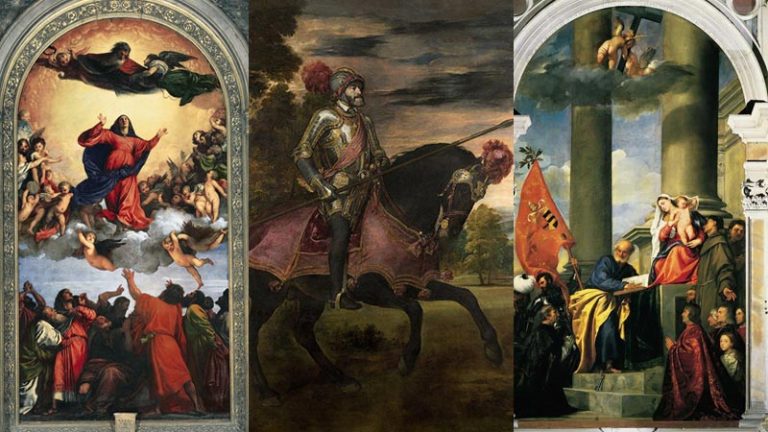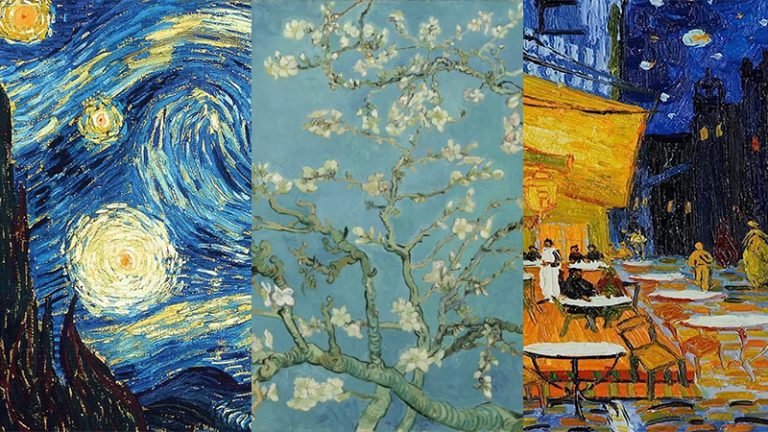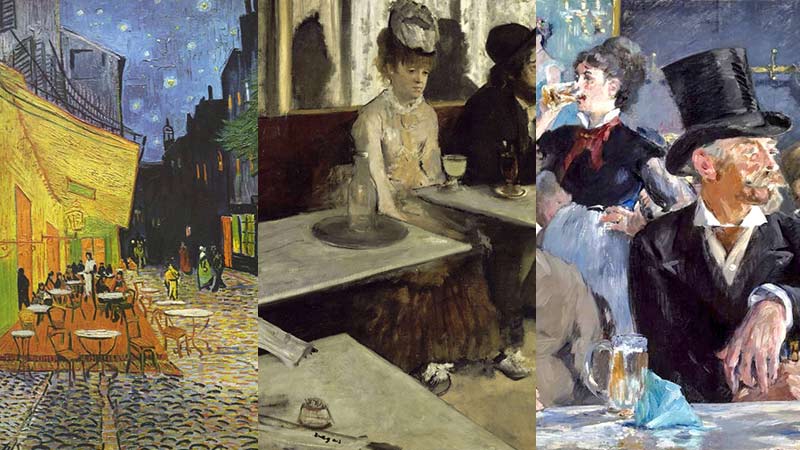
Cafés have long served as vibrant settings for artistic inspiration, capturing the essence of everyday life and human interaction.
From the bustling streets of Paris to the serene corners of quaint towns, these establishments have inspired countless artists to immortalize their ambiance on canvas.
The fusion of creativity and culture within café walls has birthed some of the most iconic paintings in art history.
Among the masterpieces that celebrate this unique theme, several stand out for their emotional depth and artistic brilliance.
Works like Vincent van Gogh’s “Café Terrace at Night” and Édouard Manet’s “Olympia” not only showcase the beauty of café life but also reflect the social dynamics of their time.
This article delves into ten of the most famous café paintings, exploring the stories behind them and the artists who brought these enchanting scenes to life.
1. Café Terrace at Night – Vincent van Gogh
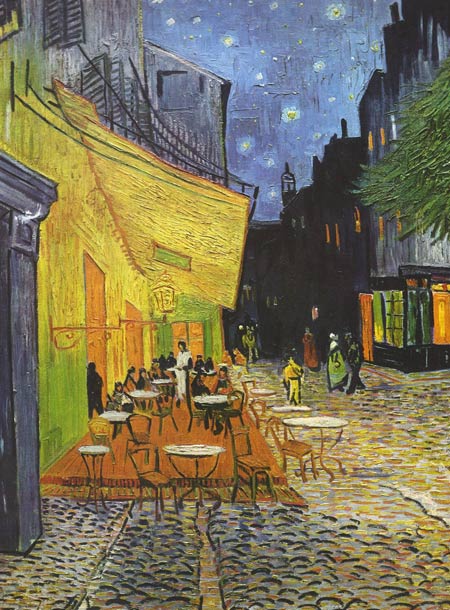
Café Terrace at Night, painted in 1888, stands as a hallmark of Vincent van Gogh’s brilliance. He created this iconic oil painting in Arles, France, capturing a vibrant café scene under a luminous starry sky.
Van Gogh referenced the painting in three letters, solidifying its authorship, despite it being unsigned.
The artwork showcases his signature bold colors and masterful brushwork, illustrating that night can be rich in color establishing a new paradigm for nocturnal representations in art.
It’s considered the first in his celebrated series of starry night paintings, illustrating his profound connection to café culture.
2. Dans un Café (L’Absinthe) – Edgar Degas
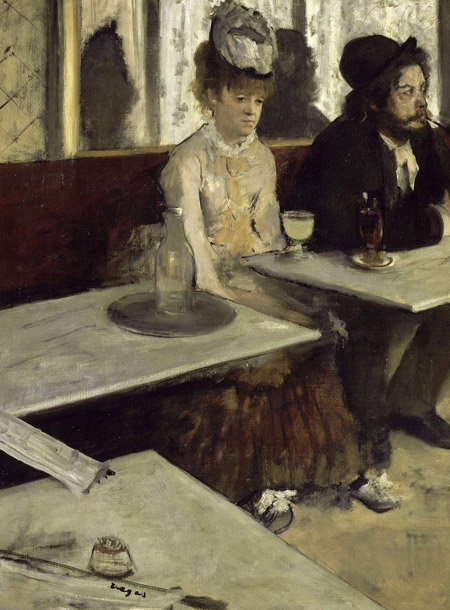
Edgar Degas painted “Dans un Café (L’Absinthe)” in 1876, showcasing a poignant moment at a Paris café.
The artwork features a woman seated with an empty expression, a glass of absinthe in front of her, capturing the drink’s association with melancholy.
Degas skillfully employs off-center framing and empty spaces, influenced by Japanese prints, creating an intimate yet unsettling atmosphere.
This piece mirrors the social dynamics of 19th-century Paris, highlighting the isolation found in bustling café settings, while also reflecting the impact of absinthe culture on artists of the time.
3. The Café-Concert – Édouard Manet
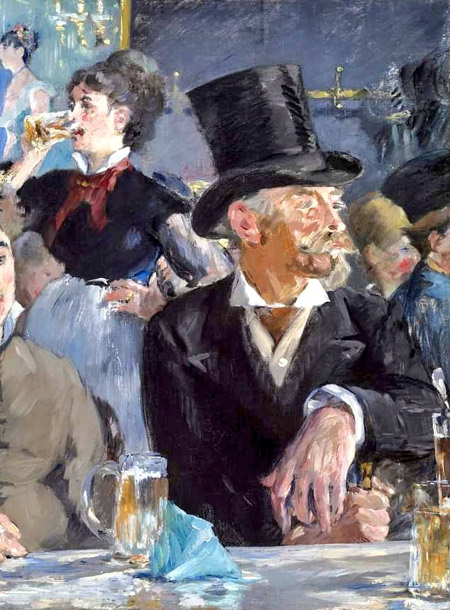
Édouard Manet’s “The Café-Concert,” created in 1879, captures a vibrant scene from Parisian social life. This painting depicts the lively atmosphere of brasseries, showcasing men and women engaging in conversation and music.
Manet’s unique brushstroke technique and direct application of color create a dynamic, modern feel, breaking from traditional composition methods.
The figures are fluid and loosely defined, enhancing the spontaneity of the café experience. This work not only reflects the evolving modernity of Paris but also illustrates the cultural significance of cafés as gathering places for artistic innovation.
4. Lunch at the Restaurant Fournaise – Pierre-Auguste Renoir
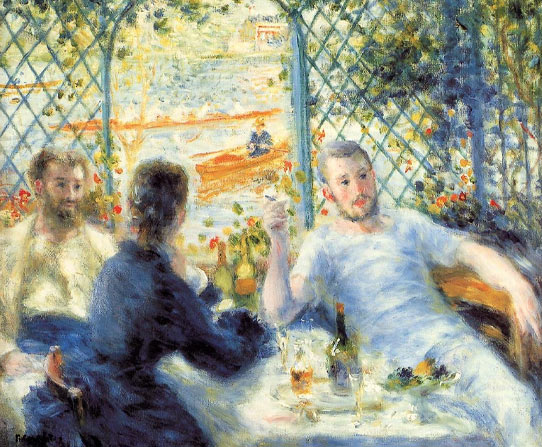
Renoir’s “Lunch at the Restaurant Fournaise,” completed in 1875, masterfully depicts three friends enjoying a meal at the iconic Maison Fournaise on the Seine River near Paris.
The painting captures a tranquil outdoor lunch scene, with vibrant colors and playful brushwork that bring the moment to life. It reflects the intimate social dynamics of the time, showing both camaraderie and leisure.
A canoeist paddling along the river in the background adds a touch of movement, further enhancing the painting’s open-air charm. This piece remains a celebrated representation of 19th-century café culture.
5. At the Moulin Rouge – Henri de Toulouse-Lautrec
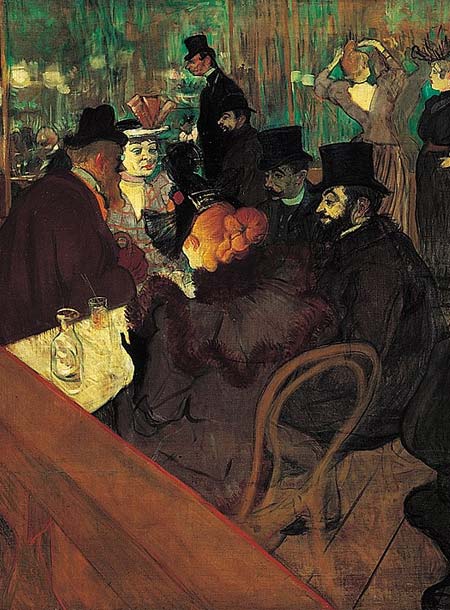
“At the Moulin Rouge” showcases the vibrant nightlife of Paris in the late 19th century. Painted between 1892 and 1895, this work captures a lively scene of men and women socializing inside the famous cabaret.
Toulouse-Lautrec, known for his short stature, cleverly included himself in the scene, standing close to Dr. Gabriel Tapié de Céleyran.
The painting highlights the flamboyant atmosphere of the Moulin Rouge, showcasing the elegance and exuberance of cabaret culture, while utilizing bold colors and striking compositions that define Lautrec’s artistic style.
6. The Night Café – Vincent van Gogh

Vincent van Gogh painted “The Night Café” in 1888, drawing inspiration from the lively atmosphere of a local café in Arles, France.
This oil painting presents a dimly lit interior filled with figures engaged in conversation, evoking a sense of unease and isolation.
Van Gogh’s bold use of contrasting colors, particularly his vivid reds and greens, highlights the emotional intensity of the scene.
The artwork showcases his innovative brushwork, capturing the essence of nightlife while reflecting the complexities of human interaction in a café environment.
7. Night café, Arles – Paul Gauguin

Paul Gauguin’s “Night Café, Arles” portrays a vibrant café scene shortly after his arrival in Arles. This painting combines elements of solitude and energetic socializing, capturing a moment filled with life.
Gauguin contrasts the isolation on one side with animated figures behind Madame Ginoux, the café owner.
His rich color palette emphasizes the emotional undertones of the scene, showcasing his distinct style that deviates from traditional Impressionism.
The work expresses not only the cultural atmosphere of Arles but also Gauguin’s innovative approach to portraying human interaction in café settings.
8. Terrace of a Cafe on Montmartre (La Guinguette) – Vincent van Gogh
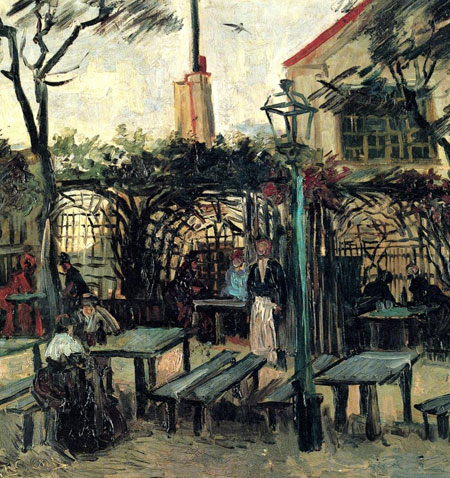
Vincent van Gogh painted “Terrace of a Cafe on Montmartre” in 1886, showcasing a lively outdoor scene at a popular café in Paris.
This artwork reflects Van Gogh’s fascination with capturing everyday life through vibrant colors and dynamic brushwork.
The café’s patrons engage in conversation against a backdrop of Parisian architecture, embodying the social spirit of the era.
The striking color contrasts highlight Van Gogh’s signature style, making this piece a significant example of his exploration of light and atmosphere.
“La Guinguette” remains a testament to the vibrant café culture that inspired many artists during this period.
9. The Café Royal, London – William Orpen

William Orpen’s “The Café Royal” captures the lively essence of this iconic establishment in London. Painted during the early 20th century, the artwork reflects a vibrant scene where well-dressed patrons engage in animated conversation.
Orpen skillfully employs a dynamic composition and rich color palette to evoke the café’s elegant atmosphere.
By focusing on the social interactions, he highlights the cultural significance of cafés as meeting points for artists, intellectuals, and society’s elite, embodying the spirit of urban life during Edwardian England.
10. Au Café – Jean Béraud

Jean Béraud’s “Au Café,” painted in the late 19th century, captures a quintessential Parisian café scene. This artwork showcases elegantly dressed patrons engaging in conversation, embodying the social dynamism of the time.
Béraud’s attention to detail highlights the café’s lively atmosphere, from the elaborate décor to the expressive faces of the subjects.
The painting reflects the cultural importance of cafés as gathering spots for the bourgeoisie, illustrating everyday moments filled with charm and vibrancy.
Béraud’s skillful use of light and shadow enhances the intimate connection among the café-goers.

